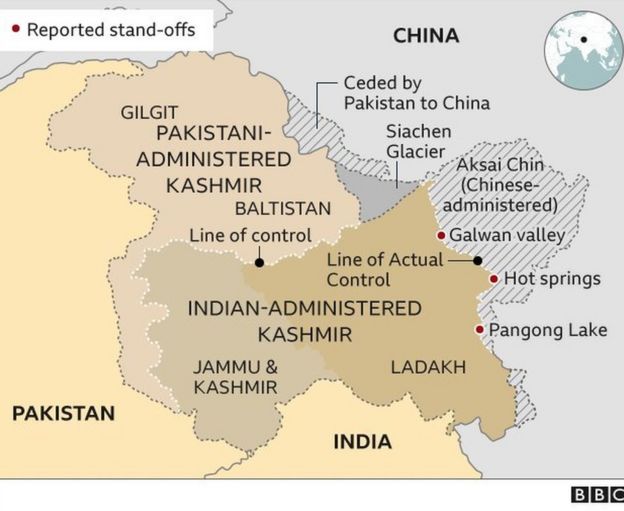4000m high skirmishes at the Chinese-Indian 'border'
Sentinel-2 MSI acquired on 29 June 2019 at 05:26:51 UTC
Sentinel-2 MSI acquired on 31 December 2019 at 04:42:01 UTC
Sentinel-1 CSAR IW acquired on 08 June 2020 at 12:48:35 UTC
Sentinel-1 CSAR IW acquired on 10 June 2020 at 00:41:38 UTC
Sentinel-2 MSI acquired on 31 December 2019 at 04:42:01 UTC
Sentinel-1 CSAR IW acquired on 08 June 2020 at 12:48:35 UTC
Sentinel-1 CSAR IW acquired on 10 June 2020 at 00:41:38 UTC
Keyword(s): Mountain range, valley, border, security, Himalaya, Tibet plateau, China, India
The 1996 agreement states, "No activities of either side shall overstep the line of actual control." while "The two sides agree that references to the line of actual control in this Agreement do not prejudice their respective positions on the boundary question". In October 2013, India and China signed a border defense cooperation agreement to ensure that patrolling along the LAC does not escalate into armed conflict.
Some of these border problems are related to the recognition of the Tibet independance from the fall of the Qing dynasty in 1912 until the Chinese army marched into Tibet and defeated its army in 1950 and the authority of the Tibetan government to sign agreements with the British authorities relative to the borders with India during the 1914 Simla Convention.
In 2017, Indian soldiers had caused violations after China built infrastructures on its side of the 3440 km long LAC. The development of Indian roads to increase control west of the LAC may have triggered Chinese reactions.









